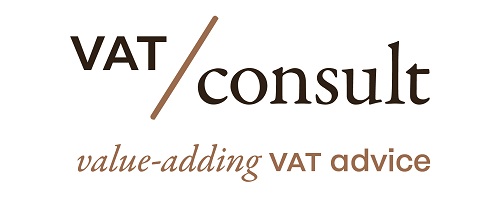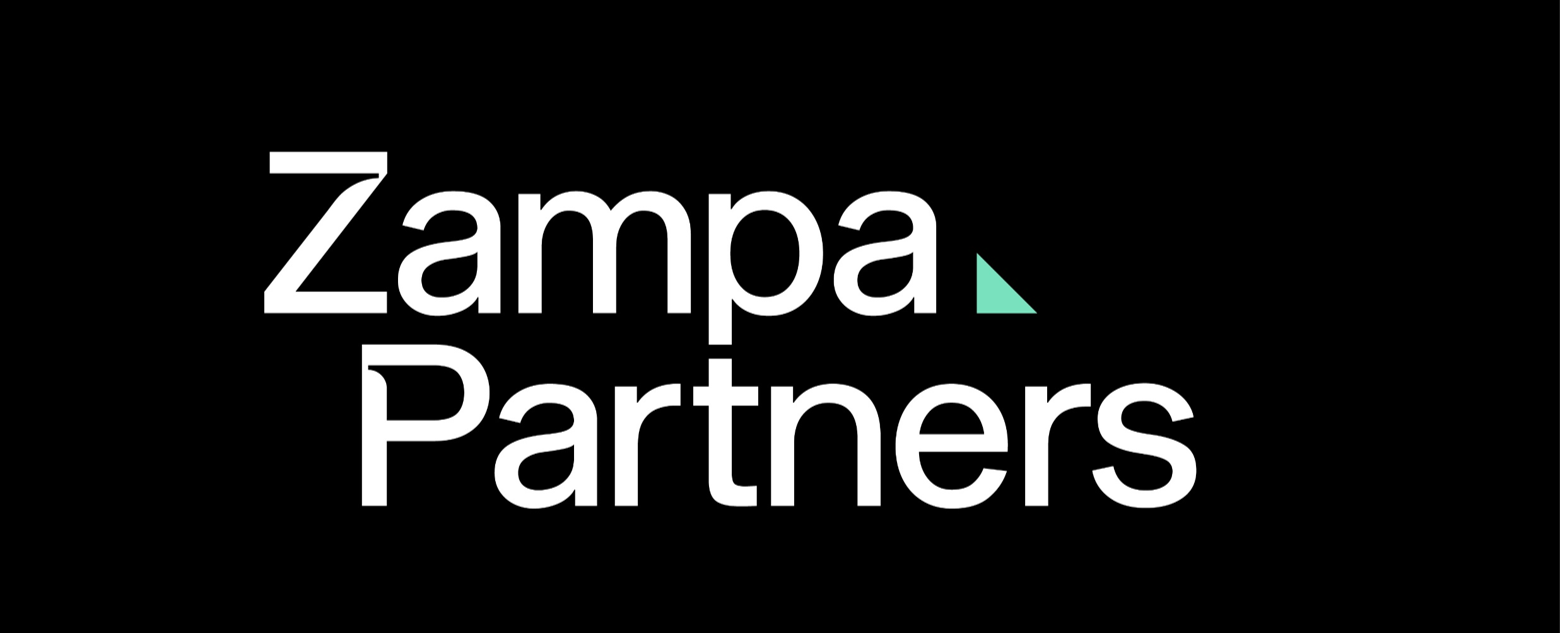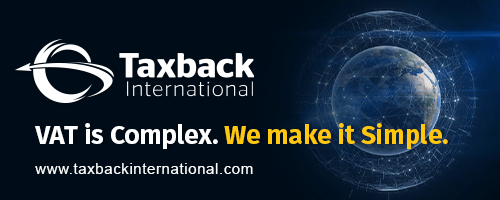Although I have not read all documents from A-Z, I have started reviewing the Proposal for a directive – COM(2022)701. And I found a couple or peculiar things.
I hope that this post will trigger some discussion and that you will share your thoughts as well. Please feel free to share these with me via e-mail. Alternatively, if you are a member of the ViDA LinkedIn group, you can also leave a comment below the post HERE.
Article by Kelvin Hulsebos, Chief Editor of VATupdate .com
My first thoughts/questions (focusing on e-invoicing, DRR and the expanded reverse charge mechanism for services other than those of art. 44) are described below.
General comment: The proposal allows a lot of choices/options, which creates a lot of differences, complexity. It would have been a lot easier if all MS had to do the same.
- Art. 194: From 2025, MS shall allow the reverse charge for non-standard services. Shall allow > does this mean that the taxpayer can choose? If yes, who? Supplier or customer? Or both? Difficult to predict? If already identified > so no (longer) possible to require non-registered customers to self-assess. Note that some countries (e.g. the Netherlands) have already implemented a very broad reverse charge mechanism and this will not be a big change (for them).
- Art. 217: So from 2024, a non-structured file and/or a file that does not allow automatic and electronic processing is no longer called an “electronic invoice”. I expect, for example, that a pdf sent by e-mail may no longer qualify as such. On the other hand, one could perhaps also argue that a pdf also has a structure and that with OCR almost any file can be automatically/electronically processed.
- Art. 218
- From 2024 MS may require e-invoices (structured ones). I see no restriction/limitation, so in theory they could require this for all transactions that require an invoice. I expect this only applies to the invoices that are subject to that MS’ invoicing rules (see article 219a which explains which MS rules to apply). If they do, are free to choose how, but they must always accept the standard of 2014/55. I understand that this standard (EN 16931) may not allow a mix of out of scope elements (e.g. disbursements) on one invoice together with other elements (e.g. service fees), which may mean that the out of scope elements have to be invoiced separately. Question: if you use the 2014/55 standard, but add something extra (the out of scope elements), would this still qualify as a 2014/55 standard invoice? If a MS requires e-invoicing, this cannot be subject to mandatory prior authorisation/verification. This is different if the MS has already implemented a system like that, for which has obtained a derogation. What happens if this derogation ends before 2028? Strictly speaking this article does not say that the derogation should be extended in order for a country to continue its own system. What does the word “prior” mean? I understand it forbids pre-clearance systems, but does it also mean that MS can require authorisation/verification afterwards? Note that this article only talks about e-invoicing, and not about e-reporting. From an AP point of view, what is the risk if an e-invoice is mandatory but it has not been issued in a compliant way (e.g. not in the right format)? Will this for example put input VAT deduction at risk?
- From 2028 the standard is e-invoices, unless a MS chooses to allow other forms. However, this exception does not apply to the transactions that are subject to the digital realtime reporting (DRR) regime. The DRR always covers intra EU supply of goods and intra EU services (subject to the reverse charge). However, countries may choose to add more transactions to DRR (e.g. domestic B2B, or even further transactions, including B2C). Note that from 2028, MS may no longer require prior mandatory authorisation or verification, not even if it is based on article 395 and not even if they have implemented this before (based on a derogation granted to them). This means that systems that are in place as in Italy (SDI) are no longer allowed. It may also mean that countries that are currently preparing e-invoicing/realtime reporting may want to adjust their solution.
- From 2024 MS may require e-invoices (structured ones). I see no restriction/limitation, so in theory they could require this for all transactions that require an invoice. I expect this only applies to the invoices that are subject to that MS’ invoicing rules (see article 219a which explains which MS rules to apply). If they do, are free to choose how, but they must always accept the standard of 2014/55. I understand that this standard (EN 16931) may not allow a mix of out of scope elements (e.g. disbursements) on one invoice together with other elements (e.g. service fees), which may mean that the out of scope elements have to be invoiced separately. Question: if you use the 2014/55 standard, but add something extra (the out of scope elements), would this still qualify as a 2014/55 standard invoice? If a MS requires e-invoicing, this cannot be subject to mandatory prior authorisation/verification. This is different if the MS has already implemented a system like that, for which has obtained a derogation. What happens if this derogation ends before 2028? Strictly speaking this article does not say that the derogation should be extended in order for a country to continue its own system. What does the word “prior” mean? I understand it forbids pre-clearance systems, but does it also mean that MS can require authorisation/verification afterwards? Note that this article only talks about e-invoicing, and not about e-reporting. From an AP point of view, what is the risk if an e-invoice is mandatory but it has not been issued in a compliant way (e.g. not in the right format)? Will this for example put input VAT deduction at risk?
- Art. 222
- From 2025, the harmonized deadline of ultimately the 15th day of the next month will also include the services subject to the “194” reverse charge rule.
- From 2028, countries will still have freedom to set their own invoice deadlines, except if it concerns intra EU supplies of goods and for intra EU services for which the VAT is self-assessed by the customer. For these transactions, the invoice deadline is reduced to 2 working days after the chargeable event. This raises various questions. Why only for these transactions (considering that fraudsters normally do not pay the output VAT on their domestic supplies), is the purpose to identify the fraudster’s purchases (without VAT)? Will the billing system be able to determine for which transactions which deadline applies? When does the chargeable event (tax point) take place? This is covered by the rules of art. 63-67. These rules can be complex, as they differentiate between goods and services, one off services vs. continuous services, prepayment, and there are also options for MS to deviate (apply a derogation). Re 194 services, does the 2-day deadline also apply if the taxpayer(s) did not apply the reverse charge? Further, how to deal with MS that have different “working days”? Note that it is required (see article 226 point 7) to show on the invoice the date on which the supply of goods or services was made or completed .. in so far as that date can be determined and differs from the date of issue of the invoice. In my experience, this is not always done. What is the risk from an AP point of view, if a vendor issues its invoice late?
- Art. 223: From 2028 a summary invoice is no longer allowed. An invoice can only cover one transaction. According to ECJ case law, in principle each supply of goods and/or services should be treated as a separate supply (transaction). This is different when there is a composite supply. For example, a single supply from an economic point of view should not be artificially split. A single, composite, supply can also exist if there are several elements, but for the average customer one element is the goal, and the other (ancillary) elements are merely to enhancing the supply of the main element (for example, the supply of wrapping paper is absorbed in the supply of the gift, and they are together considered as “one transaction”). The explanatory notes explain: The aim of the new reporting system is to provide information on transactions in almost real-time to the tax administrations and foster the use of electronic invoices. The possibility to issue summary invoices for a calendar month goes against those goals. For that reason, Article 223 is deleted, so there will be no possibility to continue issuing summary invoices. However, I wonder why the summary invoice can no longer be applied for transactions not covered by almost real-time reporting (DRR). On the other hand, if a separate invoice has to be issued for each transaction, it will probably also be easier to accept that under EN 16931 it may be required to send a separate invoice for out of scope elements (if these cannot be combined with other elements). Potentially article 236 may bring some relief, as this (already existing) article provides that Where batches containing several electronic invoices are sent or made available to the same recipient, the details common to the individual invoices may be mentioned only once where, for each invoice, all the information is accessible. However, if invoices are subject to the new 2-day deadline, batches are likely to become a lot smaller. Also, note that this article focuses only on electronic invoices, and does not cover paper invoices nor un-structured digital invoices.
- Art. 226:
- From 2024 this article will not (yet) change, but in my view it is curious that despite the fact that there will be more (even mandatory) e-invoicing, the invoice is not required to include any information about the electronic address/destination of the invoice (e.g. e-mail address, portal to upload, etc.). Further, MS must always accept the standard of 2014/55, but does this also mean that the core elements of an electronic invoice (see article 6 of 2014/55) will become mandatory fields? If yes, it seems that some of these fields are not included in the VAT invoice requirements (yet). The core elements of article 6 are:
(a) process and invoice identifiers;
(b) the invoice period;
(c) seller information;
(d) buyer information;
(e) payee information;
(f) seller’s tax representative information;
(g) contract reference;
(h) delivery details;
(i) payment instructions;
(j) allowance or charge information;
(k) invoice line item information;
(l) invoice totals;
(m) VAT breakdown. - From 2028, the following points (16), (17) and (18) are added:
- 16) in the case of a corrective invoice, the sequential number which identifies the corrected invoice, as referred to in point (2); Is the invoice number always sufficiently clear? E.g. what if a business start the same invoice sequence each year? What happens to credit (or negative) invoices that are not corrections? What if the corrective invoice refers to multiple original invoices?
- 17) the IBAN number of the supplier’s bank account to which the payment for the invoice will be credited. If the IBAN number is not available, any other identifier which unambiguously identifies the bank account to which the invoice will be credited; Are there any cases where the supplier would not use IBAN? What if the account is on name of another person/entity? Or what if multiple bank account numbers on the same invoice are used? What if it’s barter/payment in kind? What if not paid by bank, intercompany netting, etc. What happens if the customer pays to a different bank account? Do you need to issue a correction invoice?
- 18) The date on which the payment of the supply of goods or services is due or, where partial payments are agreed, the date and amount of each payment; Does the billing system have that data, is it always clear already – what happens if the agreed dates are different from reality – do you need to issue a correction?
- From 2024 this article will not (yet) change, but in my view it is curious that despite the fact that there will be more (even mandatory) e-invoicing, the invoice is not required to include any information about the electronic address/destination of the invoice (e.g. e-mail address, portal to upload, etc.). Further, MS must always accept the standard of 2014/55, but does this also mean that the core elements of an electronic invoice (see article 6 of 2014/55) will become mandatory fields? If yes, it seems that some of these fields are not included in the VAT invoice requirements (yet). The core elements of article 6 are:
- Art. 232: From 2024 the supplier no longer needs its customer’s approval to issue e-invoices. However, it will probably still need to align how it will issue the e-invoices, and where they are issued to. From an AP point of view, this change also means that your vendors will no longer need your approval, which could mean that you will face a shift from paper/traditional purchase invoices to (structured) e-invoices. Is your AP system ready for that? I expect it will still be possible (from a civil law point of view) to agree that no e-invoices will be issued (unless the relevant MS has made use of its right to make this mandatory).
- CHAPTER 6 – Digital reporting requirements – Section 1 – Digital reporting requirements for cross-border supplies of goods and services for
consideration made between taxable persons: From 2028 the European Sales Listing will stop to exist. How will this impact the MS where the ESL is submitted together with the Intrastat? Instead of the ESL, DDR will be required. Although the title refers to cross-border, I understand that MS may also decide to include other (e.g. domestic, perhaps even non-EU related) transactions in DRR. - Art. 262: From 2028 only the introductory wording is replaced of this article, which seems to say that when DRR replaces the recapitulative statement there is no change in paragraphs a) – c), which means that transactions that are exempt should not be reported (i.e. it is still relevant to carve them out).
- Art. 263: From 2028, within two days after the invoice the DRR should be submitted. Can the DRR also be submitted sooner than the invoice? To my experience, the timely issuance of an invoice is not monitored very strictly currently. What happens if the invoice is late? DRR should be submitted within two days after the date the invoice should have been issued. Note that this article is address to the person issues the invoice (i.e. normally the supplier). For self-billing (AP and/or AR), it may be a challenge for the supplier to manage the two day deadline.
- Art. 264: Not all invoice fields need to be transmitted as part of the DRR, only a selection of the invoice fields. Questions: How to fill the rate field for exemption (blank and/or 0?). If the reverse charge applies, can the rate field be left blank, or is it required to show the rate to be applied by the customer (in the customer country)? Will countries make it easier to check the ID that belongs to a VAT ID (e.g. Germany does not show name/address)? Why is it not needed to include the customer’s name and address (wouldn’t this allow a more thorough check)? Why can the tax point details be omitted (seems crucial for matching purposes).
- Art. 266: Which MS currently require additional information in the European Sales Listings? From 2028 this will no longer be required.
- Art. 267: This article is addressed to the customer that should self-assess the VAT for the purchase of (non-standard place of supply rule) services and fiscal representatives that are liable for the VAT. Why are the customers that apply the reverse charge based on art. 196 (standard place of supply services) not mentioned? Further, if this person has to “comply with the obligation, laid down in this Chapter, to submit the data” from 2028, what does this exactly mean (see also comments below art. 268)?
- Art. 268: In this article, the customers that purchase intra EU goods (article 138) are mentioned. If this person has to report the data, what does this exactly mean? Do they have to invoice the same data as the vendor? Via DRR? Also within 2 days (if yes, this may a short deadline, as they also have to process the invoice)? Or via their VAT return? The explanatory notes do not provide much detail, as they only say Article 268 places an obligation on Member States to collect data from the taxpayers that, in their territory, make intra-Community acquisitions of goods or transactions treated as such. The collection of this data was optional for Member States under the recapitulative statements. I.e. this clarifies that it is no longer optional, but mandatory, but does not explain how/when the data should be submitted. On the other hand, the general part of the explanatory notes does say that there is currently a (timing) gap between reporting of sales vs. purchases (see here). In my view, to allow matching, it would make sense to read this article in such a way that the customer has to report the same data in the same way as the supplier (i.e. via DRR within 2 days).
- Section 2 – Digital reporting requirements for supplies of goods and services for consideration made between taxable persons within the territory of a Member State: Note that the title of this section is misleading, as it may also concern other than B2B domestic transactions.
- Art. 271a: This article is addressed to taxable persons that are identified (i.e. have a VAT registration/ID) in the territory of the MS. This could also cover non-EU persons (if they have an EU VAT ID). However, it would not cover non-EU persons without any EU registration. From 2028, MS may require more than intra-EU transactions to be reported via DRR.
- Ad 1. Does “within their territory” see to the customer, or to the place of supply, or both? As this paragraph mentions “supplies” it seems this is addressed to the supplier only.
- Ad 2. This seems very broad (“other than”). Does it also apply to purchases? To transactions involving non-EU? The explanatory notes only mention B2C as an example.
- If a MS uses this freedom, is the dataset the same as for mandatory DRR transactions?
- Art. 271b: If MS introduce DRR for extra transactions, they may introduce their own formats, as long as they (also) allow the 2014/55 standard. Would it be possible that they implement (or maintain) two standards (i.e. one for mandatory DRR and a different one for DRR based on 271a)? The explanatory notes mention that such a 271a system should have the same features of and align with the system implemented for intra-Community transactions.
- Art. 273: This article explains that MS may not impose additional invoicing obligations over and above those laid down in Chapter 3, nor to implement additional reporting obligations -over and above those laid down in Title XI, Chapter 6. Does this mean that transactions subject to DRR cannot be subject to other reporting obligations than DRR? If yes, does this mean that MS may not require them in SAF-T, MYDATA, control statements, VAT return, annual VAT return, etc?
- The explanatory notes mention The removal of recapitulative statements as a result of the DRR is expected to bring a net benefit to companies engaged in cross-border transactions. However, companies that are not active across borders, (the vast majority of micro and small entities) would incur costs related to the introduction of a DRR. Those costs could be partly mitigated by the introduction of additional services at national level, such as the pre-filling of VAT returns. However, it seems this is not addressed in further detail in this Directive, so it seems these initiatives will have to be taken by the MS (on “national level”).
- What are now the next steps? Approval by MS (unanimously)? Consulting the European Parliament and the Economic and Social Committee? Subsequently the MS should implement the changes in their national legislation? Especially for the changes per 2024, this seems challenging.
- The European Commission asks for feedback (see here). All feedback received will be summarised by the European Commission and presented to the European Parliament and Council with the aim of feeding into the legislative debate. This adopted act is open for feedback for a minimum period of 8 weeks. However, the eight-week feedback period is being extended every day until this adopted proposal is available in all EU languages. At the time of writing this (30 December 2022), the deadline for feedback was set at 24 February 2023.















